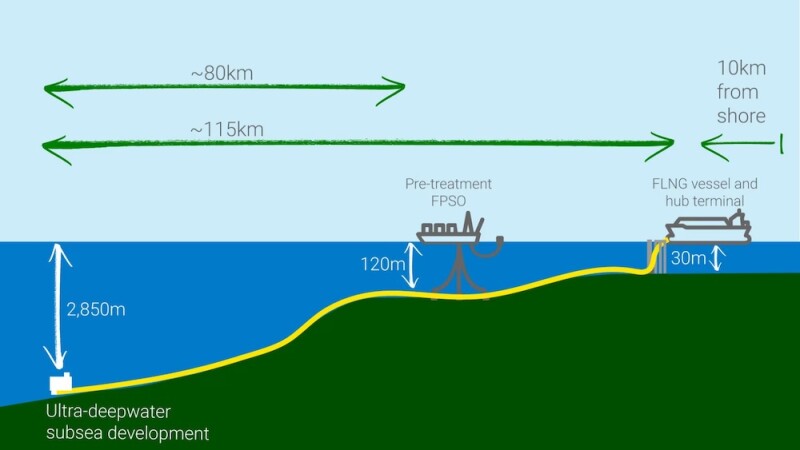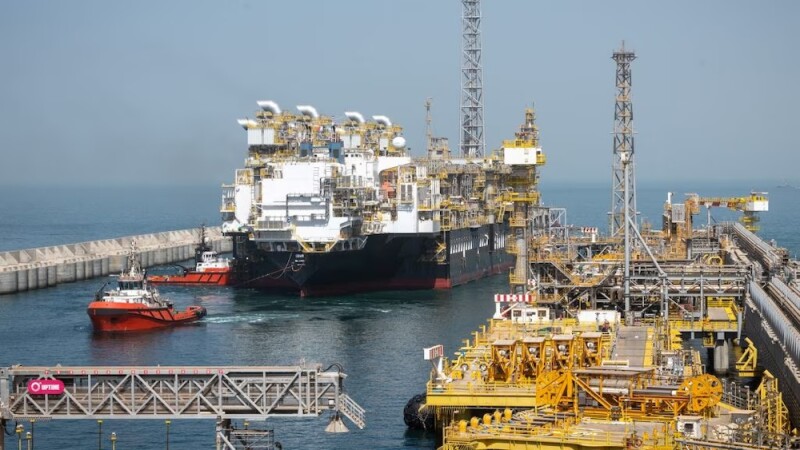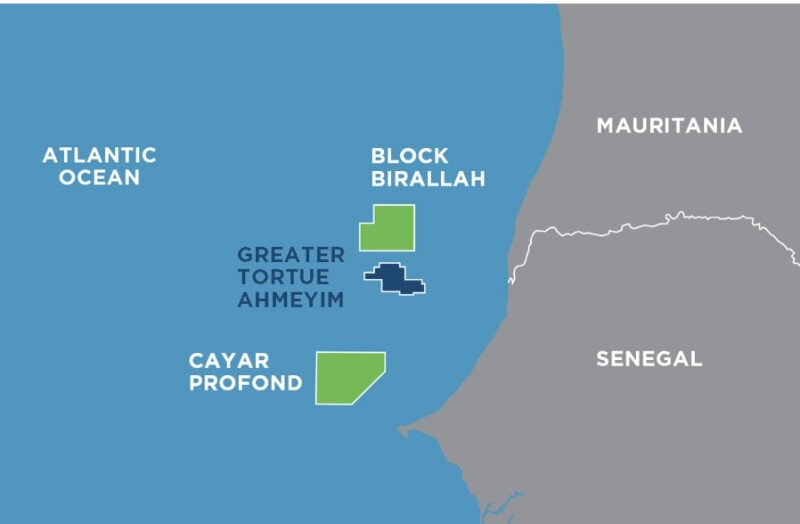The last piece of BP’s operated Greater Tortue Ahmeyim (GTA) megaproject—the GTA FPSO—is being installed offshore Mauritania and Senegal.
BP announced 4 June the GTA floating production, storage, and offloading vessel (FPSO) had arrived on-site in late May following a 12,000-nautical-mile voyage from the COSCO Qidong Shipyard in China, where it was fabricated.
As of 4 June, the FPSO vessel was being moored 25 miles offshore the maritime border of Mauritania and Senegal in about 400 ft water depth.
The project is moving toward commissioning, startup, and first gas production.

The FPSO was constructed in China and set sail for the GTA location in early 2023 after delays caused by typhoon-related damage to mooring lines in 2022 had been repaired. Problems with sea-fastening equipment and other equipment prompted an unplanned stop in Mauritius and the Canary Islands for remediation work.
“The FPSO alone came with a set of unique challenges—from transporting it to the Atlantic from China to battling damaging typhoons,” Anil Senol, project general manager tasked with the transportation and installation of the FPSO, said in a news release.

The multibillion-dollar GTA Phase 1 is the first gas development in the new basin offshore Mauritania and Senegal, and it’s one of BP’s largest projects to date. GTA Phase 1 is expected to produce up to 2.3 mtpa of liquefied natural gas (LNG) over the course of 2 decades from the deep waters off of West Africa. The project includes a breakwater, subsea infrastructure, a floating LNG (FLNG) facility that arrived in February 2024, and the recently arrived FPSO.
Subsea pipelines and infrastructure will send gas from wells in water depths of up to 9,200 ft into the GTA FPSO for the removal of water, other liquids, and impurities. The FPSO will have up to 140 people on board during normal operation and is expected to process more than 500 MMcf/D of gas.
The gas will then be transferred by another pipeline to the Gimi FLNG vessel, which is owned and operated by Golar LNG. Located about 6 miles offshore, Gimi is berthed at a specially built hub terminal that features a three-quarter-mile-long breakwater made up of 21 giant 16,000-tonne concrete structures intended to protect both Gimi and visiting LNG carriers from bad weather.

Once the gas arrives at the FLNG facility, it will be cryogenically cooled, liquefied, and stored. Most LNG will be transferred to visiting carriers for export while some will help meet demand in the host countries.
“It’s a massive civil engineering project, two massive shipbuilding projects, and a massive pipelines project all in one—and they all need to be safely and flawlessly integrated,” Alan Edwards, project general manager for GTA subsea, said in a news release.
Edmund Wynne-Williams, project general manager for integration, said BP was able to execute the project because of techniques and experience developed from working on projects in places like the Gulf of Mexico and the North Sea.
“GTA Phase 1 has taken our capabilities to new limits,” he said.
BP is operating the project on behalf of partners Kosmos Energy, Petrosen, and Société Mauritanienne des Hydrocarbures (SMH).
GTA Phase 2

In February 2023, BP and its partners progressed the development concept for GTA Phase 2 to the next stage of evaluation. The partnership is evaluating a gravity-based structure as the basis for the GTA Phase 2 expansion project with total capacity of between 2.5 and 3.0 mtpa.
The concept design will also include new wells and subsea equipment, integrating with and expanding on existing GTA infrastructure. The partnership is considering powering LNG liquefication using electricity to help drive operational emissions lower.


